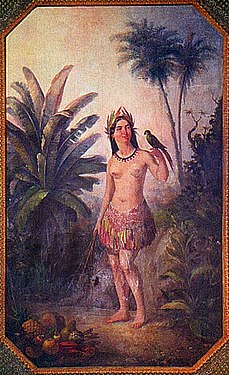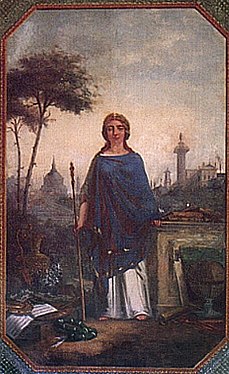Francisco Pedro do Amaral
- Machine translation, like DeepL or Google Translate, is a useful starting point for translations, but translators must revise errors as necessary and confirm that the translation is accurate, rather than simply copy-pasting machine-translated text into the English Wikipedia.
- Do not translate text that appears unreliable or low-quality. If possible, verify the text with references provided in the foreign-language article.
- You must provide copyright attribution in the edit summary accompanying your translation by providing an interlanguage link to the source of your translation. A model attribution edit summary is
Content in this edit is translated from the existing Portuguese Wikipedia article at [[:pt:Francisco Pedro do Amaral]]; see its history for attribution. - You may also add the template
{{Translated|pt|Francisco Pedro do Amaral}}to the talk page. - For more guidance, see Wikipedia:Translation.

Francisco Pedro do Amaral (c. 1790 – 10 November 1831) was a Brazilian painter, designer, scenographer and gilder.
Biography
It is believed that he took his first lessons with José Leandro de Carvalho (1770-1834) then, in 1807, enrolled at the "Aula Régia de Desenho e Figura", under the direction of Manuel Dias de Oliveira.[1] After graduating, he applied for a teaching position there, but was not accepted. Instead, he found employment as chief assistant to a stage designer named Manoel da Costa at the Real Teatro de São João (now the Teatro João Caetano),[1] but quit after a major disagreement. He then worked for an architect until his former teacher Carvalho invited him to work at the Paço Imperial, which began his career as a decorator.
When Jean-Baptiste Debret arrived with the French Artistic Mission, Amaral and a Portuguese-immigrant painter, Simplício de Sá, became two of his first students.[1] After the establishment of the Academia Imperial de Belas Artes, Amaral was commissioned to provide decorations for the Biblioteca Nacional (which, at that time, was located in the Carmo Convent [pt]), and the Paço de São Cristóvão, where he worked until 1829. He also designed decorations for festivals and experimented with new processes for lithography. In 1827, he founded the "Sociedade de São Lucas"; a painter's association modeled after the French Académie de Saint-Luc.[1]
In 1830, he returned to the Paço de São Cristóvão to decorate the coaches that were to be used for the Nuptial Mass of Emperor Pedro I and Amélie of Leuchtenberg.[1] After completing the work, he fell ill and died the following month, possibly from tuberculosis. He never married, but may have had children and was apparently quite wealthy.[citation needed]
Few of his works have survived. Among the most notable are the above-mentioned coaches (now at the Imperial Museum of Brazil) and allegorical panels depicting the four continents, in the Museu do Primeiro Reinado [pt] (formerly the "Palacete do Caminho Novo"). A street in the Jaguaré District of São Paulo is named after him.
Allegories of the Four Continents
-
 Africa
Africa -
 America
America -
 Asia
Asia -
 Europe
Europe
References
- ^ a b c d e Brief biography @ the Enciclopédia Itaú Cultural.
Further reading
- Patrícia de Barros Araújo. O artista Francisco Pedro do Amaral. In A revista eletrônica de DezenoveVinte. Volume III, n. 3, July 2008. Full text online
External links
 Media related to Francisco Pedro do Amaral at Wikimedia Commons
Media related to Francisco Pedro do Amaral at Wikimedia Commons
- v
- t
- e













